
79th Edition: June 2020
Key Points
- Live cattle trade volumes remain strong despite the ongoing Covid 19 disruption.
- Australian feeder and slaughter cattle supplies down and prices up.
Indonesia : Slaughter Steers AUD $4.04/kg live weight (Rp9,900 = $1AUD)
June slaughter cattle prices have remained much the same as last month with the indicator price still Rp40,000 per kg for steers with a quite narrow range of only Rp39 to Rp41k.
Demand and prices usually drop back following the festival periods of Ramadan and Lebaran but this doesn’t appear to be the case this year which may be linked to the very limited supplies of Indian buffalo beef (IBM).
While IBM is certainly back in the market it is only in a limited number of outlets and there also appears to be problems with demand as I am told that the product has been offered at a discount to encourage sales.
Last year the going rate in supermarkets for IBM was Rp80,000 per kg but I understand that even at Rp70,000 per kg it has been slow to move. Advice from importers of beef indicate that the prices of frozen product out of Brazil has been too high so there is a move to restrict imports the lower priced cuts in an attempt to bring the delivered rate close to the IBM pricing.
The May import total for live feeders reached 47,500 head, a little higher than recent months probably reflecting lower feeder cattle prices during April.
The virus pandemic continues to move through Indonesia although accurate information is in short supply. See photo below from the Jakarta post of a wet market in Surabaya where the government has created new spacing arrangements to assist markets to stay open while keeping people safely separated. Indonesians are used to wearing masks with a very high proportion doing so as a normal personal practice prior to the pandemic when travelling outside their homes to protect against the ever present air pollution.
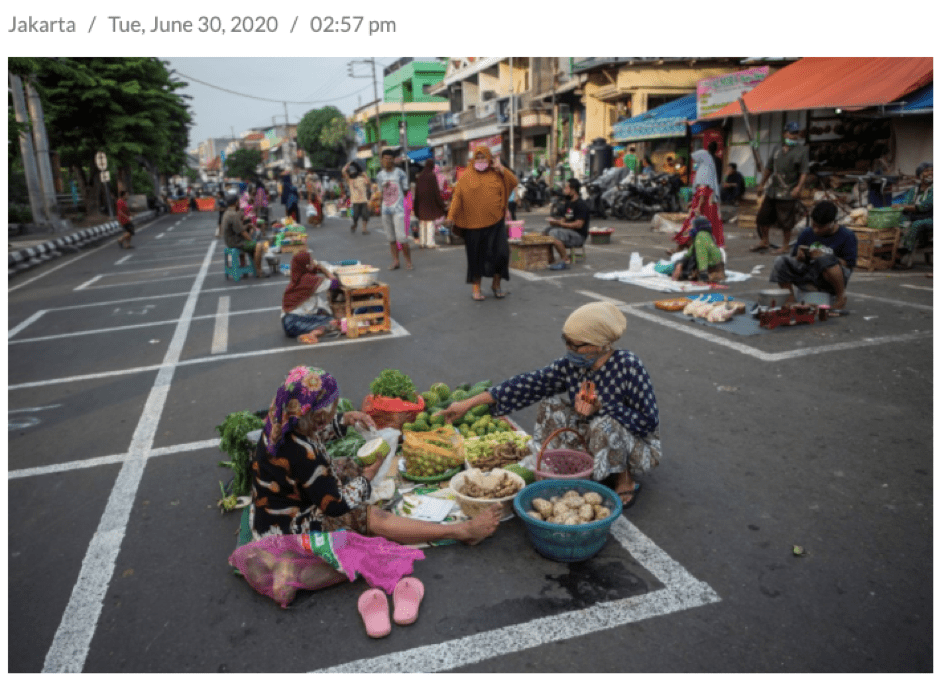
Picture from the Jakarta Post June 30th : This photo is actually in Surabaya where the local government is promoting self-distancing while allowing essential food markets to continue operation with reduced risk of infection.0
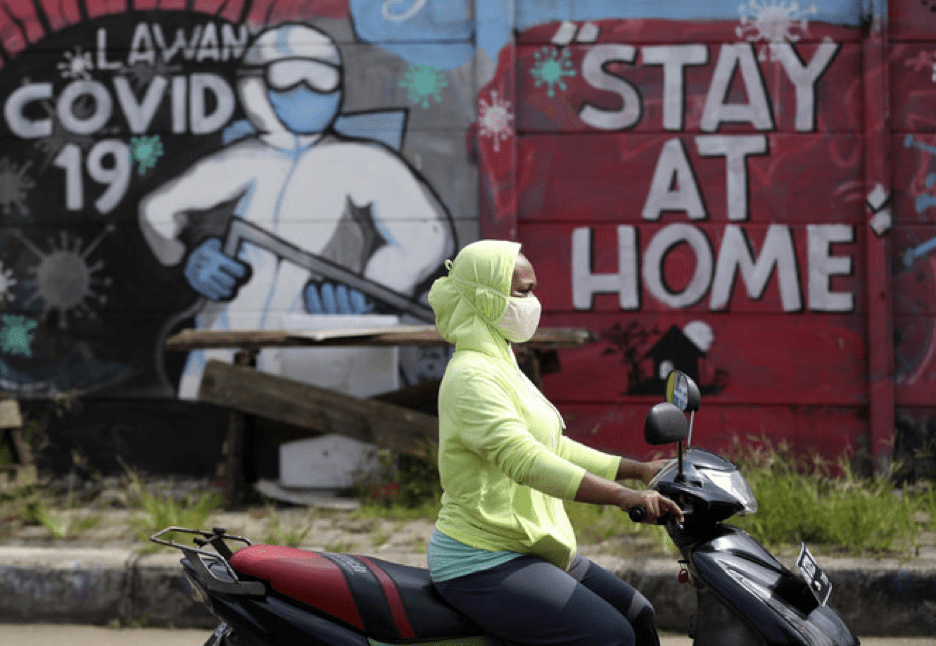
Picture in Jakarta from the Arab News : Nobody is in doubt about what needs to be done but life must go on as the lack of a government safety net for the unemployed means if you don’t have a job you have no money for food.
Darwin feeder steer prices moved higher during June to end the month at around $3.40 per kg live weight with even a few bids as high as $3.65 as supply begins to dry up. Cattle are also becoming harder to find in Queensland with rates for slaughter ox and feeder cattle rising to the $3.50 to $3.60 range which will certainly put the pressure on Vietnamese importers who can’t add value to their slaughter cattle as the Indonesian feedlotters can with feeders.
Vietnam: Slaughter Steers AUD $4.47 / kg (VND16,100 to $1AUD)
Local slaughter cattle prices are unchanged this month with the average slaughter steer price at Dong 72,000 per kg live weight. Import numbers for May were a very strong 26,000 which is well above the average of about 20,000 for the previous 4 months. Anecdotal advice for June suggests that this level of imports is continuing although the recent sharp lift in cattle prices across northern Australia might cause the rate to come back towards the average.
It seems that Vietnam is out-performing its neighbours in many respects from their very effective control program for Corona virus to continuing to maintain a booming economy. According to the Asian Development Bank (ADB), Vietnam’s economy had strong growth in 2019 as a result of high domestic demand, a strong manufacturing and processing industry, and high Foreign Direct Investment (FDI) and is forecast to remain one of the fastest-growing economies in Southeast Asia, despite the impact of COVID-19. The government launched a US$10.8 billion credit support package in March to combat the crisis. After COVID-19, the economy is expected to rebound at a growth rate of 6.8 percent in 2021.
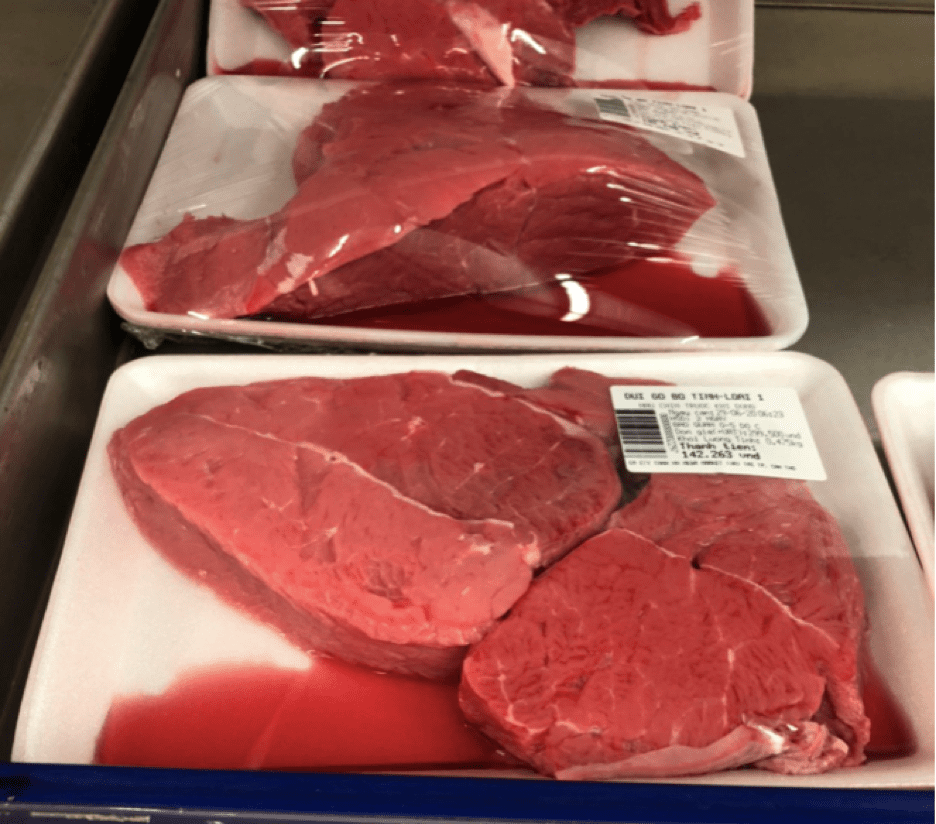
The Vietnamese are doing a brilliant job with their economy but they still have some improvements to make with their beef processing and packaging technologies.
China : Slaughter Cattle AUD $6.47 / kg (RMB 4.87 = AUD$)
Slaughter cattle prices are similar to last month with the average of Beijing and Shanghai rates at Y31.5 per kg live weight in June for local beef cattle. Fattening bull calves from the very large dairy operations is now a major beef production system with the live price for finished Holstein bulls quoted as Y28.5 per kg live or a discount of about 11% over local beef cattle breeds.
Wet markets are closed in Beijing as a result of the recent second outbreak of the virus while they remain open in Shanghai. Pork prices remain high.
Philippines: Slaughter Cattle AUD $5.94 / kg (Peso 34.5 to AUD$1)
Prices for slaughter cattle have not changed since last month with the reduction in the AUD rate above a reflection of the strengthening Aussie dollar only. My market information comes from a source in Davao, Mindanao and after a discussion with a knowledgeable industry person it appears that the rates for live cattle are quite a bit lower in Luzon. I will try to get rates for these cattle for the next report. If anyone wishes to volunteer the figures they can send a response to the blog site. Beef in both the supermarkets and wet markets has edged up about 5pc during June. My agent describes the local market as simply FLAT in all respects. Business remains generally restricted as a result of movement restrictions which are still in place in many parts of the country. This affects inter-island shipping as well as road transport so the impact across the country remains significant. The central island of Cebu is back under lock down as a result of a second wave of virus infections.
Thailand: Slaughter Steers AUD $4.33 / kg (Baht 21.5 to $1AUD)
Slaughter cattle rates decreased this month from 97 Baht per kg in May to 93 Baht in June. By contrast, feeder cattle prices are strong and rising at Baht 115 per kg live weight. One of the main source of feeders is through the border crossing from Myanmar at Mae Sot which remains closed so the supply of feeders is likely to remain low and keep prices high for some time to come.
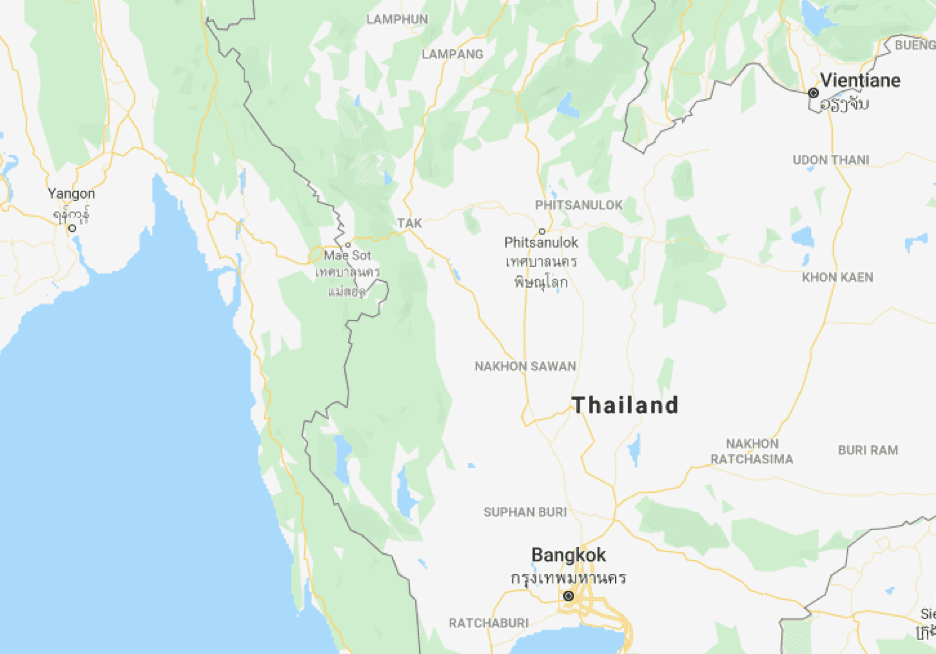
See the Mae Sot border crossing east of Yangon. When it is open it is quite well placed to supply feeder cattle to central Thailand where they can be fattened and either slaughtered locally or exported to China or Vietnam via Cambodia and Laos.
At Sea.
I have been back onshore in Darwin for a week in quarantine but I board a new ship heading for Vietnam tomorrow.
The beef on my last ship ranged from excellent to tough as old boot leather so I asked the chief cook to show me the source. See the explanation below, some was from Brazil while the Aussie product was from Young in New South Wales. Thankfully there was also some first rate Australian lamb to serve us as a Sunday lunch treat.
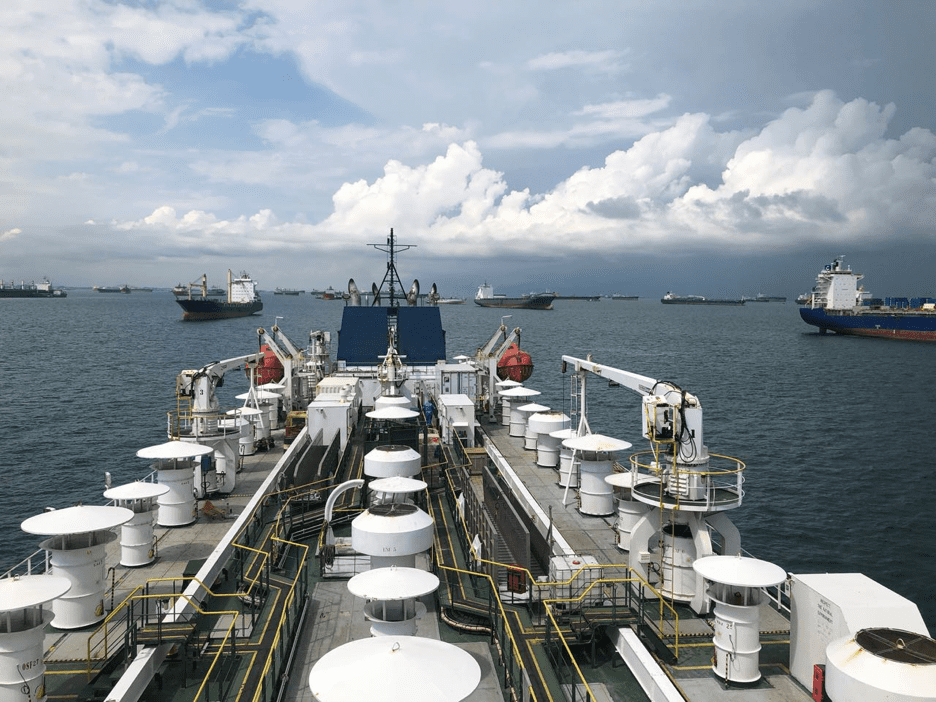
Singapore harbour from the upper deck of the cattle ship. The harbour is the parking bay for literally hundreds of ships of all types picking up fuel and stores or waiting for a new destination. Going ashore for a break is out of the question.
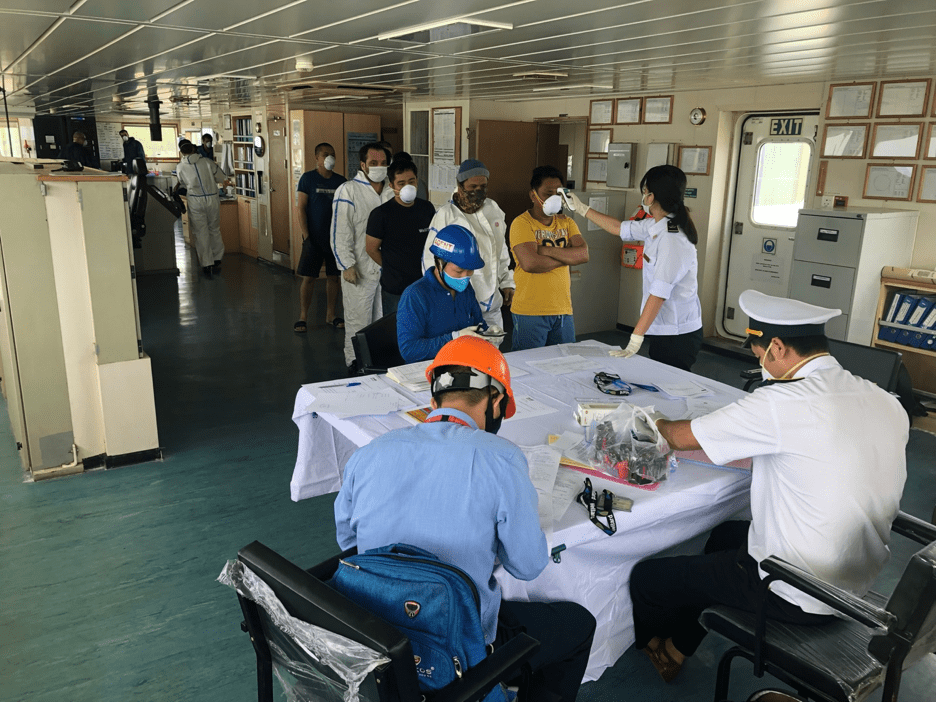
Health Check on arrival in Vietnam. The discharge of the cattle cannot commence until all the crew have a clean health check. In Singapore, nobody can leave the vessel for a crew change unless the whole crew first passes a clean health check.
June 2020 Prices
These figures are converted to AUD$ from their respective currencies which are changing every day so the actual prices here are corrupted slightly by constant foreign exchange fluctuations. The AUD$ figures presented below should be regarded as reliable trends rather than exact individual prices. Where possible the meat cut used for pricing in the wet and supermarket is Knuckle / Round.
| Location | Date | Wet Market
AUD$/kg |
Super market
$/kg |
Broiler chicken
$/kg |
Live Steer
Slaughter Wt AUD$/kg |
| Indonesia | Jan 2020 | 13.98 | 19.14 | 3.76 | 4.19 |
| Rp9,250 | Feb 2020 | 14.05 | 18.38 | 3.78 | 4.22 |
| Rp9,300 | March 20 | 13.98 | 19.14
Buffalo $8.60 |
3.76 | 4.19 |
| Rp9,800 | April 20 | 13.27 | 12.35 B$8.16 | 3.57 | 3.99 |
| Rp9,700 | May 20 | 13.40 | 18.45 | 4.12 | 4.12 |
| Rp9,900 | June 20 | 13.13 | 15.95 | 4.55 | 4.04 |
| Philippines | Jan 2020 | 13.79 | 13.79 | 4.45 | 5.32 |
| P33.7 | Feb 2020 | 14.84 | 14.84 | 4.45 | 6.23 |
| P31.5 | March 20 | – | – | – | – |
| P31.5 | April 20 | 15.87 | 15.87 | 4.44 | 6.67 |
| P33.0 | May 20 | 15.15 | 15.15 | 4.55 | 6.36 |
| P34.5 | June 20 | 15.07 | 15.07 | 3.48 | 5.94 |
| Thailand | Jan 2020 | 11.06 | NA | 3.37 | 5.10 |
| THB20.7 | Feb 2020 | 11.11 | NA | 3.38 | 4.64 |
| THB20.0 | March 20 | 11.00 | NA | 3.50 | 4.42 |
| THB20.5 | April 20 | 10.73 | NA | 3.41 | 4.63 |
| THB20.9 | May 20 | 10.52 | NA | 3.35 | 4.69 |
| THB21.5 | June 20 | 10.23 | NA | 3.26 | 4.33 |
| Vietnam | Jan 2020 | 19.50 | 17.99 | 5.03 | 4.68 |
| D15,400 | Feb 2020 | 20.13 | 20.39 | 5.13 | 4.84 |
| D14,500 | March 20 | 21.36 | 21.66 | 7.03 | 4.93 |
| D14,700 | April 20 | 21.09 | 21.36 | 5.37 | 4.90 |
| D15,200 | May 20 | 20.39 | 21.71 | 4.28 | 4.74 |
| D16,100 | June 20 | NA | 17.39 | 4.10 | 4.47 |
| China Beijing | Jan 2020 | 17.80 | 15.17 | 4.45 | 6.78 |
| Y4.64 | Feb 2020 | 18.53 | 16.81 | 3.88 | 7.11 |
| Y4.35 | March 20 | – | 17.93 | 4.14 | 7.58 |
| Y4.45 | April 20 | NA | 17.53 | 4.18 | 6.97 |
| Y4.65 | May 20 | 16.34 | 18.06 | 3.87 | 7.10 |
| Y4.87 | June 20 | NA | 16.34 | 3.70 | 6.55 |
| Shanghai | Jan 2020 | 20.3 | 25.00 | 4.24 | 6.78 |
| Pork per kg | Feb 2020 | 20.69 | 24.14 | 3.88 | 7.11 |
| Beijing Y48.6 | March 20 | 21.60 | 24.83 | 4.14 | 7.49 |
| ShanghaiY48.2 | April 20 | 20.22 | 24.27 | 3.78 | 7.14 |
| May 20 | 18.49 | 23.23 | 3.61 | 6.58 | |
| June 20 | 18.07 | 22.18 | 3.49 | 6.41 | |
| Darwin Feeder Steer | June 19
$2.90 |
July 19
$3.00 |
August 19
$3.15 |
Sept 19
$3.15 |
October 19
$3.30 |
| Nov 19
$3.35 |
Dec 19
$3.25 |
January 2020
$3.25 |
Feb 2020 $3.80 | March 2020
$3.40 |
|
| April 20
$2.80 |
May 20
$3.25 |
June 2020
$3.40 |

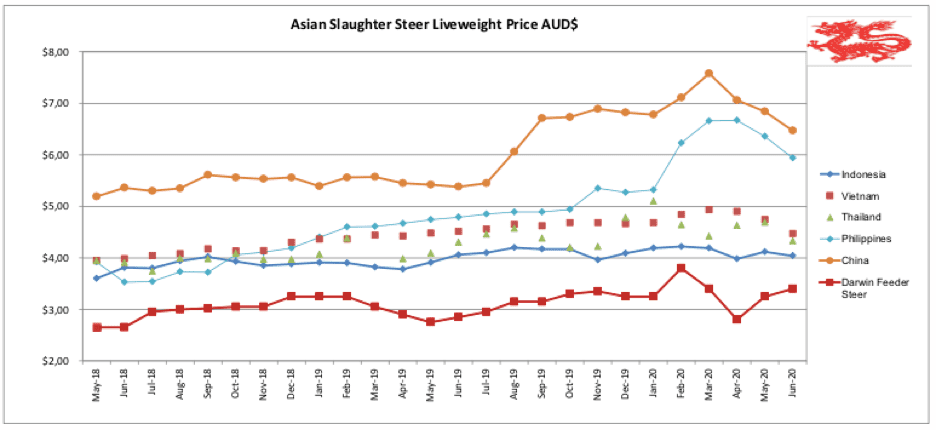
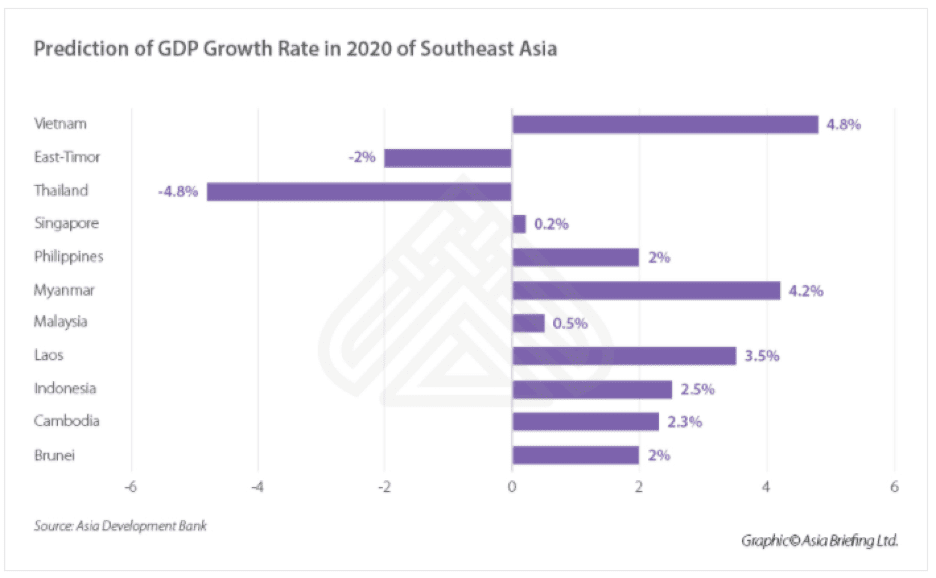
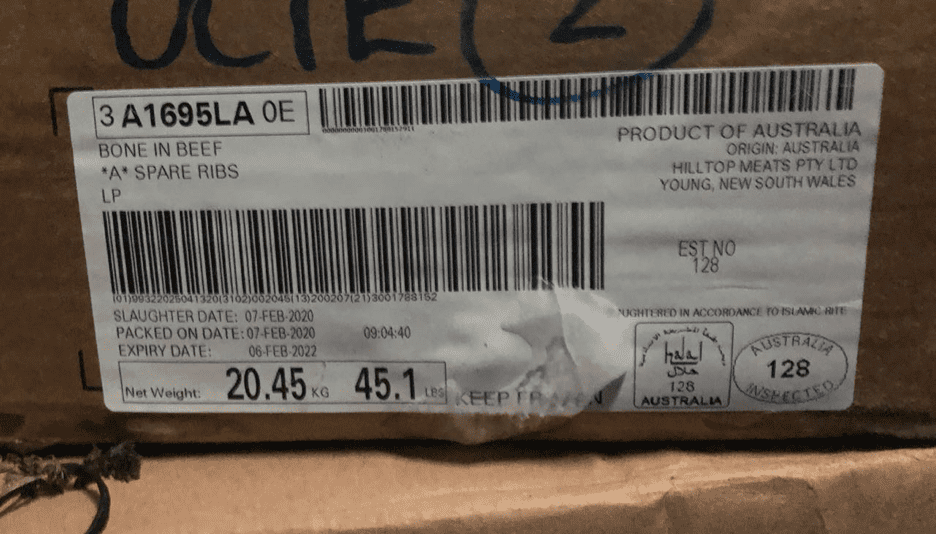
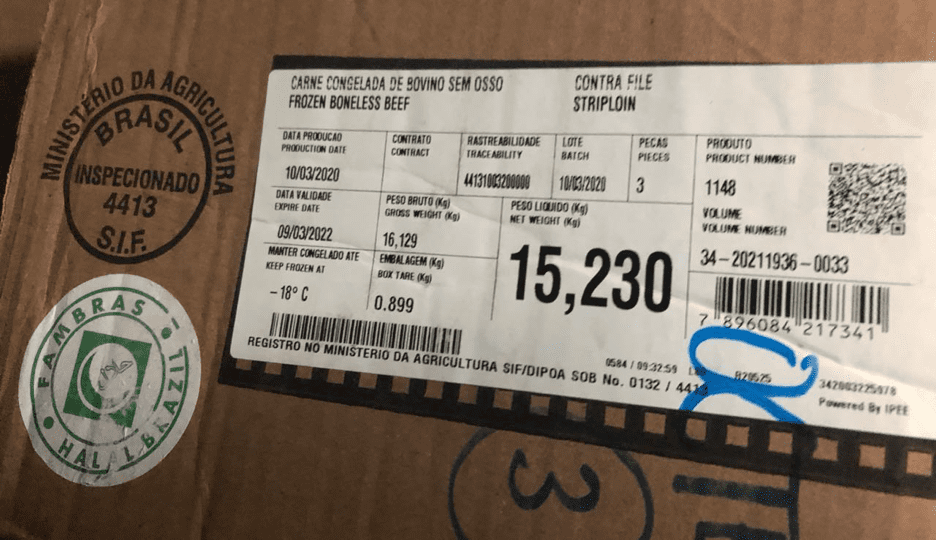
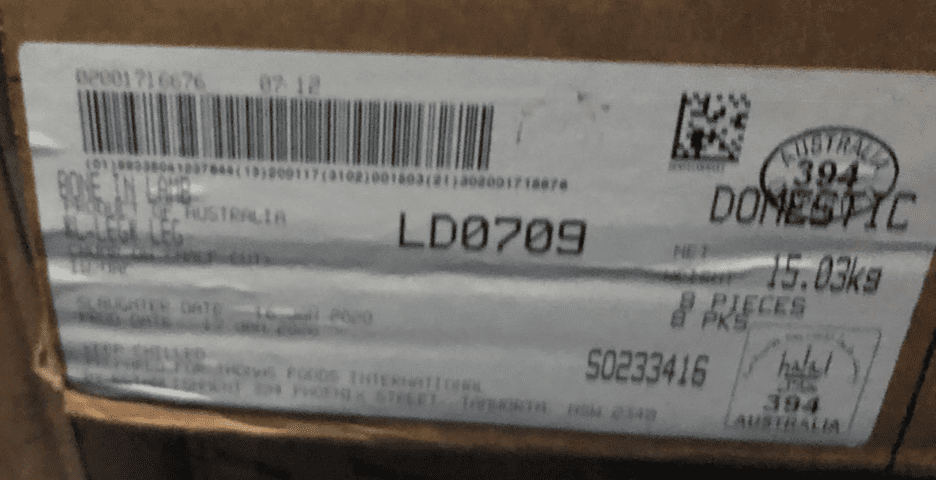
Appreciate your ‘on the job, on the ground and on the ship’ reports, Ross.
Another very interesting read, Dr Ross always seems to have his finger on the pulse with an excellent summary of the live export business.,
No surprises at all on the eating characteristics of Brazilian beef. Due to Screw Fly, they don’t cut their bull calves or brand for that matter.
2 or 3 yr old Brahman bulls aren’t known for tender beef.